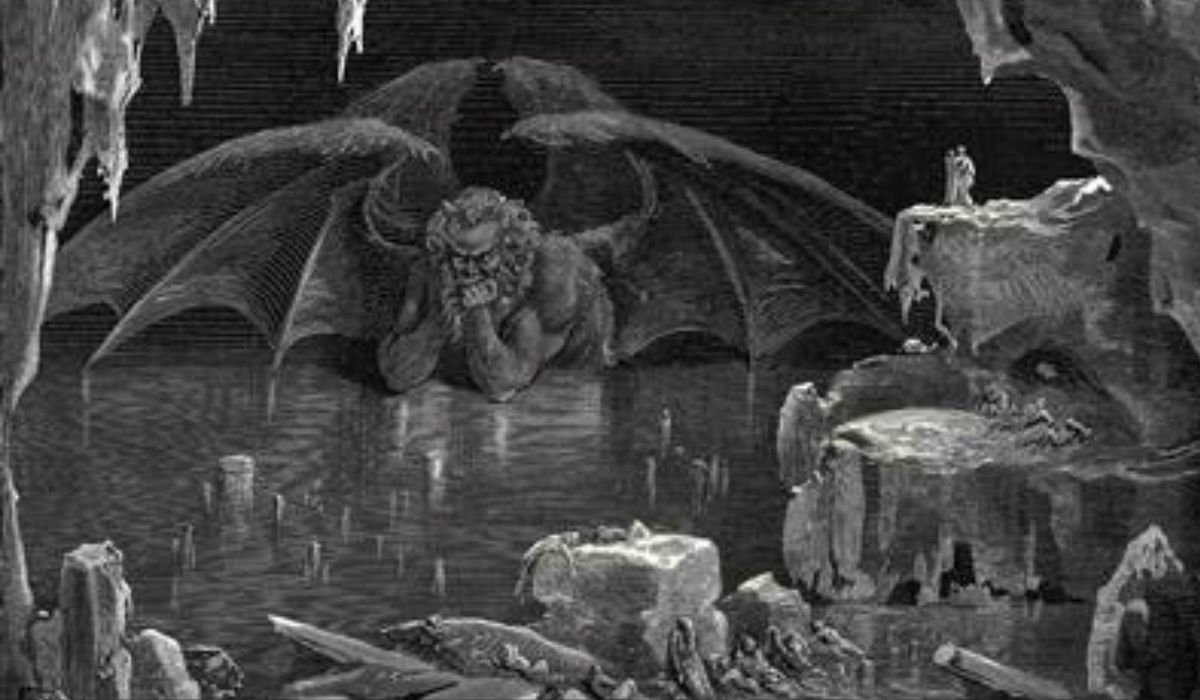introduction
In the realm of religious and philosophical discourse, few figures spark as much intrigue and controversy as Satan. Often portrayed as the ultimate adversary of good, Satan embodies the forces of corruption and destruction. While many acknowledge his role in tempting humanity and leading souls astray, the question remains: Can Satan create anything of his own? This article aims to explore the premise that Satan can only corrupt and destroy, delving into biblical portrayals, theological perspectives, and philosophical interpretations.
Understanding Satan
Biblical Portrayal
In the Bible, Satan is primarily depicted as the adversary of God and humanity. His story begins in the Book of Genesis, where he tempts Eve to eat the forbidden fruit, leading to the Fall of Humanity. This act of disobedience not only brought sin into the world but also introduced the concept of moral evil. In this portrayal, Satan is a figure who seeks to undermine God’s creation and purpose, demonstrating a clear inclination toward corruption and destruction rather than creation.
Throughout the New Testament, Satan’s role is further solidified. He is referred to as the “father of lies” (John 8:44), highlighting his deceptive nature. His primary aim seems to be leading individuals away from the truth and into sin, reinforcing the idea that his actions are inherently destructive.
Theological Perspectives
Theological interpretations of Satan vary among different religious traditions, yet many converge on the belief that Satan’s nature is fundamentally corrupt. In Christian theology, particularly, Satan is often seen as a fallen angel who rebelled against God. His rebellion, which led to his expulsion from Heaven, symbolizes his inability to create anything good. Instead, he exists in a state of perpetual opposition to God, corrupting and destroying what God has created.
Moreover, various theological arguments suggest that Satan lacks the creative power inherent to the Divine. While God creates life, beauty, and goodness, Satan can only twist and distort these creations for his purposes. This distinction underscores the limitations of Satan’s influence—he can manipulate existing entities, but he cannot produce something original and good.
Philosophical Interpretations
Philosophically, Satan’s role raises important questions about free will and moral choice. Some interpretations suggest that Satan embodies the concept of evil as a necessary counterpart to good. This dualism presents Satan as a force that allows humanity to exercise free will—choosing between good and evil.
However, this does not imply that Satan has the capacity to create. Rather, he exploits human freedom to lead individuals toward sin and despair. In this context, Satan’s influence serves to highlight the importance of moral choices, further reinforcing the idea that his power is limited to corruption and destruction.
The Power of Creation
Divine Creation
At the core of many religious beliefs lies the concept of divine creation. According to Christian doctrine, God is the ultimate creator who spoke the universe into existence (Genesis 1:1). This act of creation signifies not just the formation of physical entities but also the establishment of order, beauty, and purpose.
Satan, in contrast, is not a creator. He lacks the divine capacity to bring forth life or goodness. Instead, he seeks to undermine God’s creations, using temptation and deception as tools to lead humanity astray. This distinction is crucial in understanding the limitations of Satan’s power—he can corrupt what exists but cannot create anew.
Satan’s Limitations
Satan’s limitations are evident in his inability to create life or instill genuine goodness. While he may tempt individuals to engage in destructive behavior, he cannot force them to do so. This reflects a fundamental aspect of his character: his power is derived from manipulation rather than creation.
Furthermore, Satan’s role as a corrupting force serves as a reminder of the fragility of human nature. Individuals are susceptible to temptation, but they also possess the ability to choose righteousness. This dynamic underscores the importance of free will in the cosmic struggle between good and evil.
Theological Arguments
Theological arguments supporting the idea that Satan cannot create often reference scriptural passages emphasizing God’s sovereignty. For example, in Isaiah 45:7, God declares, “I form the light and create darkness; I bring prosperity and create disaster.” This verse highlights God’s control over all aspects of existence, further implying that any act of creation is solely within His domain.
Additionally, the notion that Satan can only corrupt aligns with the belief in God’s ultimate authority. While Satan may have temporary influence, he cannot alter the divine order established by God. This reinforces the idea that Satan’s actions are inherently destructive, with no capacity for genuine creation.
Satan’s Influence on Creation
Corruption and Destruction
Satan’s primary modus operandi revolves around corruption and destruction. He seeks to exploit human weaknesses, tempting individuals to abandon their moral compass. This inclination toward corruption is evident in numerous biblical narratives, including the story of Job, where Satan attempts to destroy Job’s faith by bringing suffering and despair.
In this context, Satan’s influence is not merely a passive one; it actively works to undermine the goodness inherent in creation. By leading individuals away from God’s teachings, Satan fosters a culture of despair, deception, and moral decay.
Temptation and Sin
Satan’s role as the tempter is perhaps his most infamous characteristic. The temptation of Eve in the Garden of Eden serves as a prime example of his destructive influence. By introducing doubt and desire, Satan led humanity into sin, resulting in a fractured relationship with God.
The impact of temptation extends beyond individual actions; it shapes societal values and norms. As people succumb to sinful behavior, they contribute to a culture that embraces corruption, further validating the idea that Satan’s influence is deeply rooted in destruction.
The Fall of Humanity
The Fall of Humanity, as depicted in Genesis, illustrates the profound consequences of Satan’s corrupting influence. Through the act of disobedience, humanity’s relationship with God was irrevocably altered, leading to a state of separation and sin. This narrative serves as a cautionary tale, highlighting the dangers of straying from divine teachings.
Satan’s involvement in the Fall underscores his role as the ultimate adversary. His actions not only corrupted humanity but also introduced suffering and death into the world—fundamentally altering the course of creation.
The Battle Between Good and Evil
Cosmic Conflict
The struggle between good and evil is a central theme in many religious and philosophical texts. This cosmic conflict often pits the forces of light against the forces of darkness, with Satan representing the latter. This ongoing battle reflects the tension between creation and corruption.
Satan’s role in this conflict is multifaceted. As the adversary, he seeks to disrupt God’s plan, using temptation and deception to lead humanity astray. This struggle illustrates the complexities of free will, morality, and the human experience.
Satan’s Role in the Conflict
In the grand narrative of good versus evil, Satan occupies a prominent position. His actions serve as a catalyst for human choice, allowing individuals to confront their moral dilemmas. However, his influence is not one of creation; rather, it is rooted in manipulation and corruption.
The biblical book of Revelation paints a vivid picture of the ultimate conflict between good and evil. In this narrative, Satan faces defeat, illustrating the transient nature of his power. This underscores the belief that while Satan may influence the world, he cannot alter the divine order established by God.
The Triumph of Good
Despite Satan’s attempts to corrupt and destroy, the overarching narrative in religious texts emphasizes the triumph of good. The resurrection of Christ, for example, signifies victory over sin and death, offering hope and redemption to humanity.
This theme of ultimate victory reinforces the belief that while Satan may wield influence, he cannot create or bring about true goodness. The final victory belongs to God, affirming the inherent goodness of creation despite the challenges posed by corruption.
The Nature of Evil
Moral Evil
Moral evil, characterized by human actions that violate ethical standards, finds its origins in the influence of Satan. The concept of moral evil raises profound questions about the nature of free will and the human capacity for sin. It suggests that while individuals possess the ability to choose, they are also susceptible to external influences, particularly from malevolent forces.
Satan’s role in promoting moral evil serves as a reminder of the continuous struggle between good and evil. By sowing discord and temptation, he perpetuates a cycle of sin that challenges humanity’s moral compass.
Natural Evil
Natural evil, often manifested through suffering and calamity, complicates the understanding of Satan’s role in the world. While some argue that natural disasters reflect God’s judgment, others view them as opportunities for growth and redemption. The relationship between Satan and natural evil remains a topic of philosophical debate, raising questions about the origins of suffering.
Some interpretations suggest that Satan may exploit natural evil to further his agenda, creating chaos and despair. However, this does not imply that he possesses the power to create natural disasters; rather, he takes advantage of existing conditions to lead humanity astray.
The Problem of Evil
The philosophical problem of evil poses significant challenges to understanding Satan’s nature and power. It questions how a good and omnipotent God can allow evil to exist in the world. This dilemma often leads to discussions about free will, moral responsibility, and the role of Satan as an adversarial force.
Ultimately, the problem of evil highlights the complexities of existence. While Satan embodies corruption and destruction, the presence of evil also serves to illuminate the necessity of good. It is within this tension that individuals grapple with their moral choices and the nature of their existence.
YOU MAY ALSO LIKE: HijabHoojup: Empowering Muslim Women in the Dating Scene
Conclusion
In conclusion, the assertion that “Satan can not create, only corrupt and destroy” captures the essence of his role in the cosmic struggle between good and evil. Through biblical portrayals, theological perspectives, and philosophical interpretations, it becomes clear that Satan’s power is fundamentally limited. He can manipulate, deceive, and tempt, leading humanity away from God’s intended purpose, but he cannot create something new or good.
FAQs
What is the primary role of Satan in religious texts?
Satan is often portrayed as the adversary of God, primarily focusing on corrupting and destroying what God has created.
Can Satan create anything?
No, according to theological beliefs, Satan cannot create anything; his actions are limited to corrupting and destroying existing creations.
How does Satan tempt humanity?
Satan tempts humanity by sowing doubt and desire, leading individuals away from moral choices and towards sin and disobedience.
What is the significance of the Fall of Humanity?
The Fall of Humanity highlights Satan’s corrupting influence, resulting in sin entering the world and altering humanity’s relationship with God.
How does the concept of free will relate to Satan?
Free will allows individuals to choose between good and evil, and Satan exploits this freedom to lead people into sin and despair.










